Welcome to our comprehensive Cabomba Piauhyensis care guide! If you’re an aquarist looking to add a stunning aquatic plant to your tank, Cabomba Piauhyensis is an excellent choice.
With its vibrant red or purple-colored foliage and delicate needle-like leaves, this aquatic plant can bring natural beauty to any aquarium.
However, like any other plant, Cabomba Piauhyensis requires specific care to thrive and flourish in a tank environment.
In this guide, we will cover everything you need to know about caring for Cabomba Piauhyensis, including its unique appearance, growing conditions, propagation techniques, pruning tips, and more.
By following our expert advice, you can successfully cultivate and maintain healthy Cabomba Piauhyensis in your aquarium.
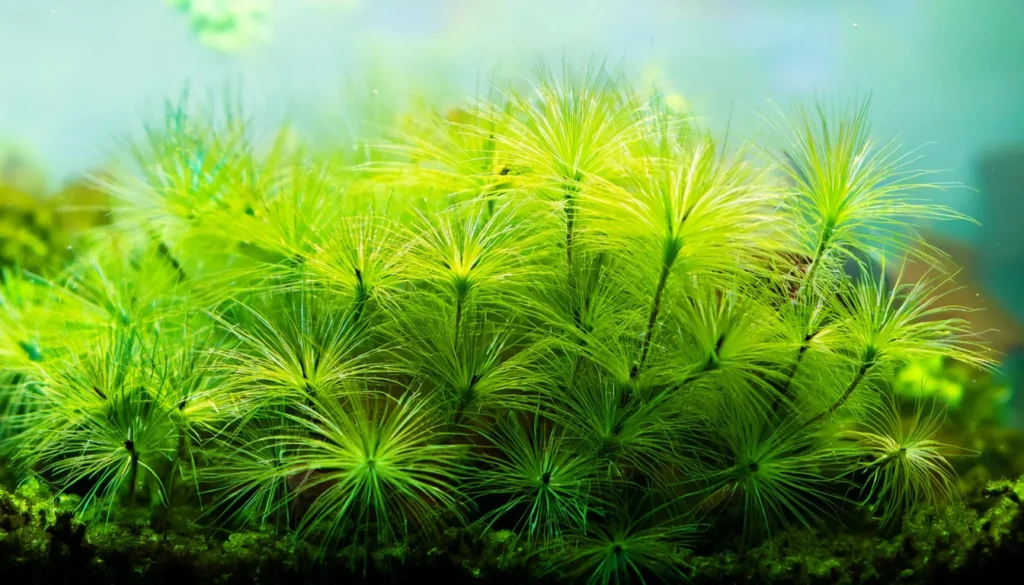
Key Takeaway
- Provide optimal lighting and water parameters for healthy Cabomba Piauhyensis growth.
- Choose the right substrate to support the plant’s roots and promote overall health.
- Understand the importance of CO2 supplementation and fertilization for optimal growth.
- Properly plant and position Cabomba Piauhyensis in your aquarium for optimal results.
- Maintain the plant through regular pruning and address common issues that may arise.
Quick Stats
| Attribute | Details |
| Family Name | Cabombaceae |
| Origin | South America |
| Height | 30-80 cm (12-31 inches) |
| pH Range | 6.5 – 7.5 |
| CO2 Requirement | Moderate to High |
| Growth Rate | Fast |
| Care Level | Moderate |
| Color Form | Green, sometimes with reddish hues under strong light |
| Water Conditions | 22-28°C (72-82°F), soft to moderately hard water |
| Max Size | Up to 80 cm (31 inches), but typically trimmed shorter in aquariums |
| Lighting | High |
| Supplements | CO2 supplementation and comprehensive liquid fertilizer |
| Placement | Background |
| Propagation | Stem cuttings |
What Is Cabomba Piauhyensis?
Cabomba Piauhyensis, also known as Red Cabomba, is an aquatic plant from the Cabombaceae family. It is characterized by delicate needle-like leaves that grow on thin stems and vibrant red or purple-colored foliage.
Native to South and Central America, Cabomba Piauhyensis is a popular choice among aquarists due to its unique appearance and vibrant coloration.
This beautiful aquatic plant adds a touch of elegance to any aquarium and is highly sought after by aquarium enthusiasts.

“Cabomba Piauhyensis brings a vibrant burst of color to any aquarium, making it a visually striking addition to any aquatic landscape.”
Natural Habitat And Origin
Cabomba piauhyensis, commonly known as Brazilian fanwort or red cabomba, is native to South America, particularly found in Brazil.
It grows naturally in freshwater habitats such as rivers, streams, ponds, and marshes in tropical and subtropical regions.
This aquatic plant is often found submerged in shallow waters with moderate to high light levels.
Cabomba piauhyensis is valued for its attractive foliage, which ranges in color from green to reddish-purple, adding visual interest to aquatic environments.
Physical Characteristics
- Foliage: The plant features finely dissected, fan-shaped foliage arranged in whorls along its stems. The leaves are deeply divided and have a delicate, feathery appearance, giving the plant a graceful and ornamental look.
- Coloration: Cabomba piauhyensis exhibits varying coloration, typically ranging from vibrant green to reddish-purple hues. The intensity of the red coloration may vary depending on environmental conditions such as light intensity and nutrient availability.
- Stems: The plant consists of slender, branching stems that can grow up to several inches in length. These stems bear the foliage in dense clusters, creating a lush and bushy appearance in aquariums.
- Root System: Cabomba piauhyensis develops a fine and delicate root system that anchors the plant in the substrate. The roots help absorb nutrients from the water column and provide stability to the plant.
Optimal Lighting For Cabomba Piauhyensis
Proper lighting is crucial for the growth and development of Cabomba Piauhyensis.
Providing the plant with the right amount and quality of light is essential to maintain its vibrant colors and promote healthy photosynthesis.
For optimal lighting, it is recommended to:
- Provide moderate to high light intensity.
- Use full-spectrum LED or fluorescent lights with a color temperature between 6500K and 7500K.
- Ensure a photoperiod of 10-12 hours daily, mimicking natural daylight cycles.
Water Parameters For Healthy Growth
Along with the right lighting conditions, maintaining proper water parameters is essential for the optimal growth of Cabomba Piauhyensis. The following parameters should be considered:
| Water Parameter | Ideal Range |
| pH | 6.5-7.5 |
| Temperature | 72-82°F (22-28°C) |
| Water Hardness | 2-10 dKH |
Temperature Parameters For Robust Growth
- Temperature Range: Maintain water temperatures between 72°F to 82°F (22°C to 28°C) for optimal growth and health of Cabomba piauhyensis.
- Ideal Temperature: Aim for a temperature around 78°F (25°C), which provides a balance between promoting vigorous growth and ensuring the well-being of aquarium inhabitants.
- Consistency: Keep the temperature stable within the recommended range to prevent stress on the plants. Sudden fluctuations in temperature can adversely affect growth and lead to plant decline.
- Heating Equipment: Use aquarium heaters to maintain stable temperatures, especially in colder climates or during seasonal changes. Ensure the heater is appropriately sized for the aquarium volume and adequately positioned for uniform heat distribution.
Choosing The Right Substrate
The substrate supports the root system and provides essential nutrients for Cabomba Piauhyensis. When choosing a substrate, consider the following:
- Use a nutrient-rich substrate specifically formulated for aquatic plants.
- Choose a substrate with a particle size that allows for proper root penetration and water circulation.
- Ensure the substrate is free from harmful chemicals or contaminants.
Positioning In Your Aquarium
- Start by selecting a suitable location within your aquarium. Cabomba Piauhyensis requires moderate to high lighting, so choose an area where it will receive adequate light.
- Prepare the substrate by ensuring it is debris-free and providing a nutrient-rich base. Cabomba Piauhyensis can thrive in various substrates, but a nutrient-rich substrate, such as aquatic soil or specialized planted tank substrate, will promote healthier growth.
- Using your fingers or a planting tweezer, carefully insert the stems into the substrate, ensuring that at least one or two nodes (where leaves develop) are buried in the substrate.
- Space the plants apart, providing enough room for each stem to grow and spread out. Overcrowding can lead to poor growth and hinder the plant’s overall development.
- Once all the stems are planted, lightly brush the substrate around the base of each stem to secure them in place.
- After planting, gently fill the aquarium with water, not disturbing the newly planted Cabomba Piauhyensis.
- Monitor the plants’ positioning as they adjust to their new environment. Make adjustments to ensure each stem is upright and properly positioned.

Recommended Tank Size
- Small Tanks: Cabomba piauhyensis can be accommodated in smaller aquariums, such as nano tanks with capacities ranging from 5 to 10 gallons. In smaller setups, it can be used as a midground or background plant, adding vertical interest and lush foliage to the aquascape.
- Medium-Sized Tanks: For medium-sized tanks with capacities between 20 to 50 gallons, Cabomba piauhyensis can be utilized as a versatile plant for various aquascaping purposes. It can be planted along the background or sides of the aquarium to create a dense, green backdrop or used as a foreground accent plant to add depth and dimension to the layout.
- Large Tanks: In larger tanks exceeding 50 gallons, Cabomba piauhyensis can be grown on a larger scale to cover expansive areas and provide naturalistic cover for fish and other aquatic inhabitants. Its fast growth rate and bushy foliage make it suitable for filling in open spaces and creating lush, densely planted sections within the aquarium.
RELATED: Grow Cryptocoryne Lutea For Vibrant Aquariums With This Simple Guide
Cabomba Piauhyensis And Tank Companions
- Cabomba Piauhyensis, with its vibrant red or purple-colored foliage, can coexist harmoniously with other fish and plant species in your aquarium. When choosing tank mates for Cabomba Piauhyensis, it’s crucial to consider their compatibility in terms of size, temperament, and water parameters.
- Some fish species may nibble on the delicate leaves or disturb the plant’s root system, so it’s essential to select species that are peaceful and won’t cause harm to the Cabomba Piauhyensis. Additionally, it’s advisable to choose fish that prefer similar water conditions to ensure optimal health for your tank’s inhabitants.
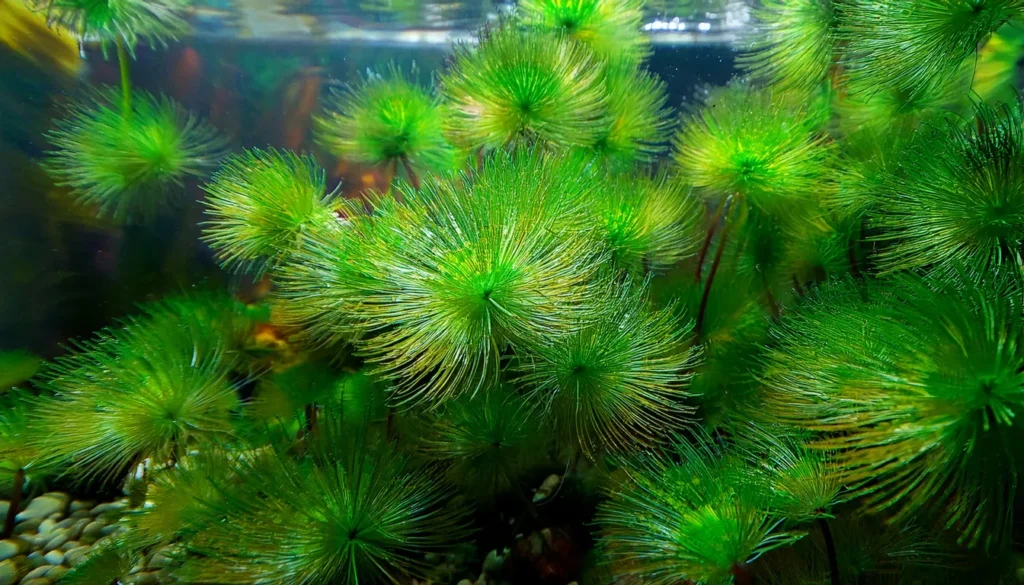
How CO2 Enhances Cabomba Piauhyensis Growth?
CO2 supplementation is crucial for promoting healthy growth in Cabomba Piauhyensis.
Carbon dioxide is a vital component of photosynthesis, the process by which plants convert light energy into chemical energy.
By increasing the availability of CO2 in the aquarium, we can enhance the plant’s metabolic processes, leading to faster growth, fuller foliage, and vibrant coloration.
To introduce CO2 into the aquarium, there are various methods available, including:
- C02 injection systems
- CO2 tablets or liquids
- DIY CO2 setups
Essential Nutrients And Fertilizers
In addition to CO2, Cabomba Piauhyensis requires certain essential nutrients for healthy growth.
These nutrients include micronutrients and macronutrients, which are critical in various metabolic processes and structural development.
Macronutrients needed by Cabomba Piauhyensis include:
- Nitrogen (N)
- Phosphorus (P)
- Potassium (K)
Micronutrients needed by Cabomba Piauhyensis include:
- Iron (Fe)
- Manganese (Mn)
- Zinc (Zn)
- Copper (Cu)
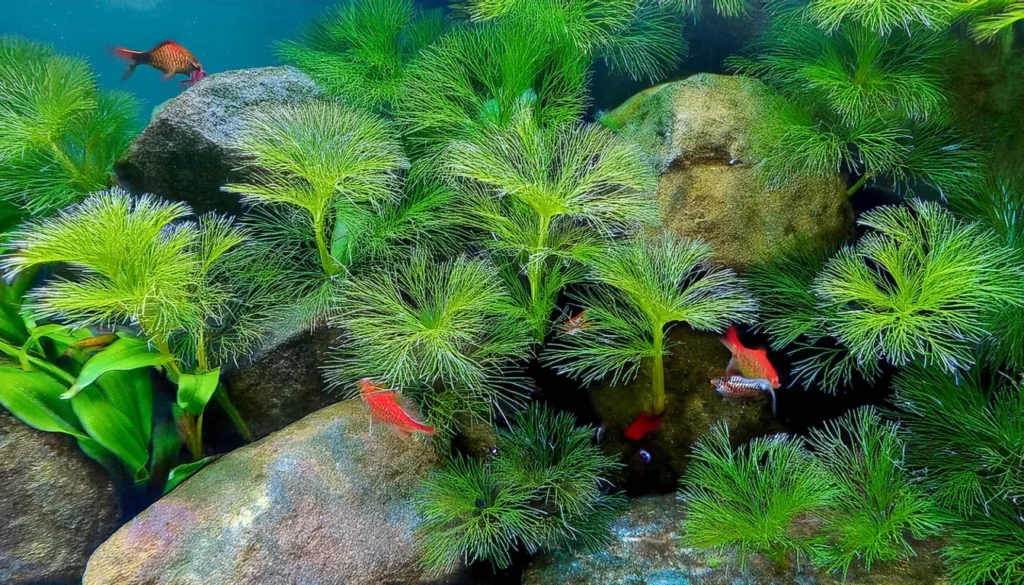
Pruning For Health And Aesthetics
Pruning Cabomba Piauhyensis is crucial for maintaining its overall health and aesthetic appeal.
It helps prevent overcrowding, encourages new growth, and maintains the desired shape of the plant. Follow these steps for proper pruning:
- Use sharp scissors or pruning shears to trim the plant carefully. Remove any dead or yellowing leaves, as they can indicate nutrient deficiencies or poor lighting conditions.
- Trim the plant from the base, cutting close to the stem. This will promote branching and encourage new growth.
- Regularly remove excessive growth to prevent the plant from overshadowing other aquatic plants in your aquarium.
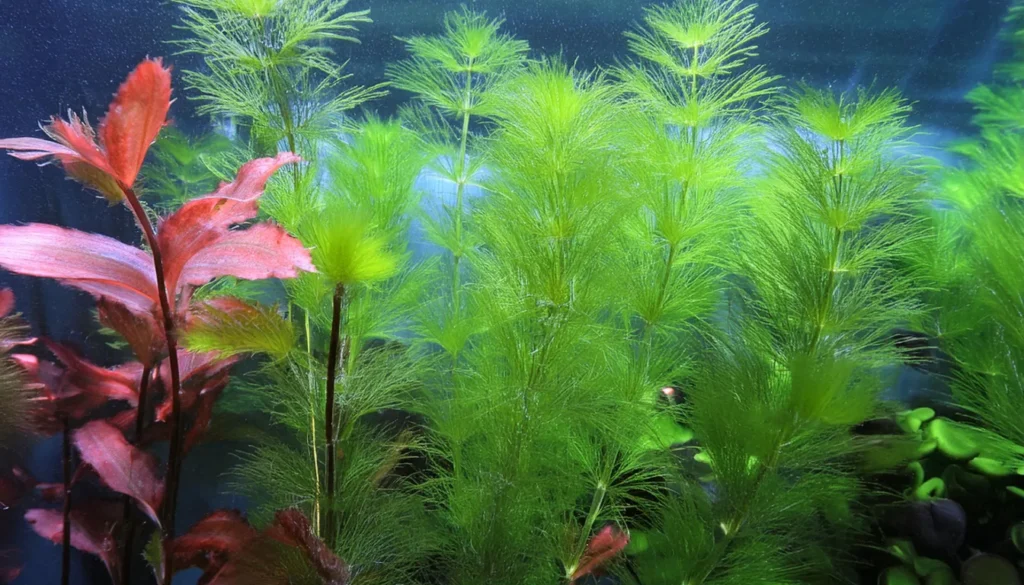
Dealing With Common Issues
While Cabomba Piauhyensis is generally a hardy plant, it can encounter some common issues.
Being aware of these problems and taking appropriate action can ensure the continued health of your plant. Here are some common issues you may face and tips on how to address them:
- Algae Growth: Algae growth can be a challenge in an aquarium with Cabomba Piauhyensis. To prevent algae from overtaking the plant, maintain proper lighting and nutrient balance in your aquarium. Regular water changes and algae removal can also help combat excessive algae growth.
- Nutrient Deficiencies: Cabomba Piauhyensis requires a balanced supply of nutrients for healthy growth. Nutrient deficiencies can manifest as stunted growth, yellowing leaves, or weak stems. Supplementing the aquarium with a high-quality liquid fertilizer can help address nutrient deficiencies and promote optimal plant health.
RELATED: The Aquatic Wonder Bacopa Australis To Transform Your Aquascape
Propagation Techniques For Cabomba Piauhyensis
- Select a healthy and mature Cabomba Piauhyensis stem.
- Using a sharp, clean pair of scissors or pruning shears, cut the stem approximately 3-4 inches below the waterline.
- Remove any lower leaves from the cutting, leaving only a few leaves at the top.
- Place the cutting in a small container with clean aquarium water or a rooting hormone solution.
- Keep the container in a well-lit area with a stable temperature.
- After a few weeks, roots should begin to develop from the base of the cutting.
- Carefully transfer the rooted cutting into a new container or directly into the aquarium substrate.
- Maintain proper care and provide optimal growing conditions to ensure the successful establishment of the propagated plant.
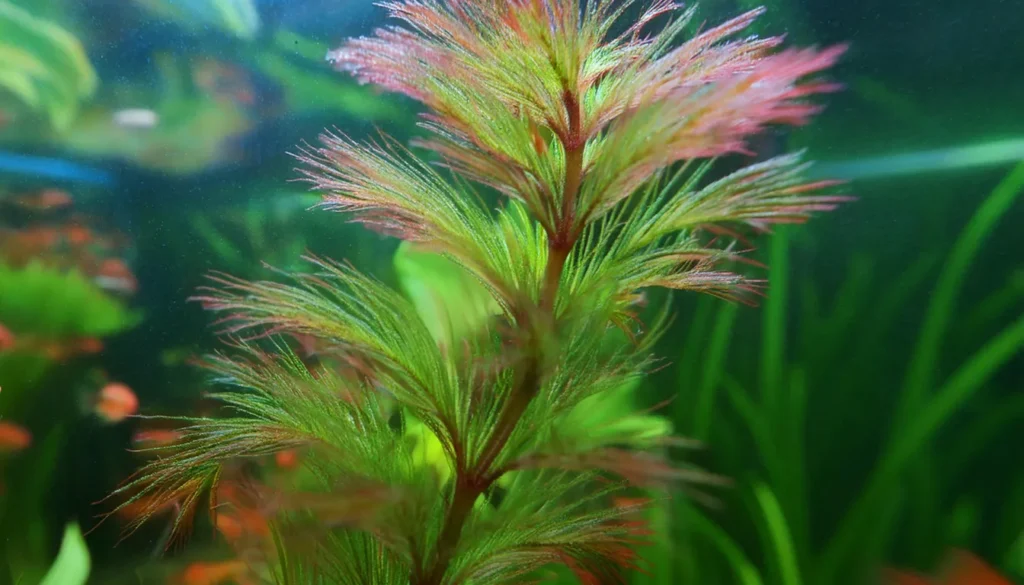
Benefits Of Plant On Aquarium Fauna
- Introducing Cabomba Piauhyensis into your aquarium can positively impact the overall ecosystem.
- The plant provides shelter and hiding spots for small fish and invertebrates, contributing to their sense of security. Additionally, Cabomba Piauhyensis can serve as a natural water filter, absorbing excess nutrients and reducing the risk of algae growth.
- The presence of Cabomba Piauhyensis in your aquarium can create a more balanced and visually appealing environment for both the plant and other fauna.
Conclusion
Cabomba Piauhyensis is a beautiful aquatic plant that adds vibrancy and natural beauty to aquariums.
Aquarists can cultivate and maintain healthy Cabomba Piauhyensis in their aquariums by understanding and implementing proper care techniques.
As outlined in this guide, the specific care requirements provide a comprehensive approach to ensure the plant’s optimal growth and development.
Whether used as a striking focal point or as part of an intricate aquascape, Cabomba Piauhyensis brings a unique aesthetic appeal to any aquatic environment.
Its delicate needle-like leaves and vibrant red or purple-colored foliage create a visually stunning display.
The plant’s versatility allows for creative placement and combinations with other plant species, enabling aquarists to create visually appealing and captivating aquascapes.
Incorporating Cabomba Piauhyensis into your aquarium enhances the overall aesthetic appeal and provides a rewarding experience for aquarists.
With proper care and maintenance, the captivating beauty of Cabomba Piauhyensis can be enjoyed for years to come, creating a mesmerizing underwater landscape.
Frequently Asked Questions
What Are The Optimal Nutrient Levels Required For Cabomba Piauhyensis To Thrive And Display Its Best Coloration?
Cabomba Piauhyensis requires a balanced supply of macronutrients (nitrogen, phosphorus, and potassium) and micronutrients (iron, manganese, and magnesium) to thrive.
Nitrate levels between 10 to 20 ppm, phosphate levels around 1 to 2 ppm, and a consistent supply of iron are crucial for vibrant growth and coloration.
Additionally, potassium levels should be maintained at 10 to 20 ppm to support overall plant health.
Regular dosing of a comprehensive liquid fertilizer and CO₂ supplementation can significantly enhance growth rates and the vibrancy of the foliage.
How Does Cabomba Piauhyensis Respond To Different Lighting Intensities, And What Is The Ideal Light Spectrum For Promoting Growth?
It requires moderate to high lighting conditions for optimal growth. Light intensity between 50 to 70 micromoles of PAR (Photosynthetically Active Radiation) is ideal.
The plant shows a preference for full-spectrum lighting that includes both blue and red wavelengths, simulating natural sunlight.
This spectrum encourages photosynthesis throughout the entire depth of the plant, promoting dense foliage and preventing stem elongation.
Under insufficient light, the plant tends to become leggy, with sparse leaves that are more susceptible to shedding.
Can Cabomba Piauhyensis Be Used In Cold Water Aquariums, And What Are The Temperature Limitations?
While it is adaptable to a range of temperatures, it performs best in warmer conditions, ideally between 22°C to 28°C (72°F to 82°F).
It can survive in cooler temperatures down to about 18°C (64°F), but growth will be significantly slower, and the plant may become more prone to shedding its leaves.
It is not recommended for cold water aquariums that operate below these temperatures, as prolonged exposure to cold conditions can lead to stress, leaf drop, and eventual plant demise.
What Are The Most Effective Methods For Propagating Cabomba Piauhyensis In An Aquarium?
Propagation of it is most effectively achieved through stem cuttings. To propagate, select a healthy stem and cut a segment of at least 5-10 cm (2-4 inches) using sharp scissors.
Remove the leaves from the bottom 2 cm (about an inch) of the cutting, and plant this end into the substrate. Ensure the cuttings are not shaded by other plants to provide them with adequate light.
Roots and new shoots will typically begin to develop within a few weeks, allowing the cuttings to grow into new, independent plants.
How Does Water Flow Affect The Growth And Health Of Cabomba Piauhyensis, And What Conditions Are Ideal?
This plant prefers environments with gentle to moderate water flow. Adequate water movement helps deliver essential nutrients to the plant, promotes gaseous exchange, and prevents detritus from settling on the delicate foliage, which can lead to decay.
However, too strong a flow can damage the fine leaves and hinder the plant’s ability to photosynthesize efficiently, leading to stress and poor growth.
Ideally, position the plant in an area of the aquarium where the water movement is steady but not turbulent, ensuring the leaves can sway gently without being torn or excessively buffeted.
- Unveiling The Wonders Of Riccia Fluitans In Aquascapes - August 7, 2024
- Vallisneria Gigantea Var. Guide To Care And Cultivation At Home - July 31, 2024
- Vesicularia Dubyana Care & Growth Guide Tips For Beginner Gardeners - July 30, 2024
